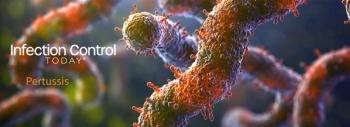
The Basics: Best Practices for the Effective Use of Disinfectants and Sterilization Techniques
Learn the basics of the critical role of proper disinfection and sterilization in health care settings, addressing key considerations, best practices, challenges, and future trends.
Properly using disinfectants and sterilization procedures in your facility can be the difference between life and death for your staff and their patients. In this guide, you will discover how the right products and techniques can set you up for success and prevent illness and infection.
Find out why sterilization is so important, how to decide which disinfectants will meet your needs and follow regulatory guidelines, how to ensure your facility exceeds sanitation requirements, and what trends to watch out for.
The importance of disinfectants and sterilization in health care settings
First, you must understand why disinfectants and sterilization techniques are so important. Maintaining a clean and sanitary environment in your health care facility is not only required by law but also necessary to keep your staff, patients, and visitors safe.
Disinfectants prevent bacteria from spreading. During the pandemic, it became clearer than ever that these products and sterilization procedures work to reduce infection rates.
Best Practices for Disinfection in Health Care Settings
The
Refer to the manufacturer’s guidelines
The best way to use a disinfectant is to follow the manufacturer’s instructions. These can usually be found on the label or inside the packaging. Following these instructions will ensure that the product is used effectively and to its best ability.
Pay attention to listed hazards
Australian legislation requires that any hazards to the health and safety of the user be listed on the disinfectant label. Pay attention to those warnings and take proper precautions, such as wearing PPE when using the product, to keep yourself safe.
Preclean surfaces
Precleaning surfaces before disinfecting is an important step in the process. Use detergent or soap with water, and then allow the surface to air-dry before applying a disinfectant solution to the area.
Sterilization Techniques: Ensuring Maximum Efficacy
When was the last time you brushed up on your
Using the right products is essential. Australia regulates disinfectants and sterilizers for medical use, and you are responsible for verifying that the products and procedures you use do not break any rules.
Some sterilization
Medical equipment
Medical equipment frequently handled by medical professionals requires proper, regular sterilization. This includes cleaning
Floors and surfaces
Other high-use areas
Hydrogen peroxide can be used for environmental surfaces, and since it is mild enough to use on skin, it makes for an effective and safe disinfectant in high-use areas like bathrooms.
Challenges and Solutions in Disinfection and Sterilization
Identify practical challenges
Some practical challenges involved with sterilization and disinfection of medical facilities include:
- Autoclaving: this process is relatively slow and can make it difficult to serve patients when they need it.
- Hazardous chemicals can make your facility unsafe for use if there are inhalation or skin safety concerns.
- Environmental issues: many of the processes, products, and procedures involved in sterilization are born from unsustainable practices.
Establish an effective management system
Some of the most challenging parts of keeping up with disinfection and sterilization techniques involve the management aspect of running your facility. You will likely find gaps in your processes without a proper management system.
Documentation and record-keeping
You will want to document cleaning and sterilization schedules, infection prevention and control, PPE usage and storage, and preventative maintenance.
Quality assurance (QA)
QA is paramount to staying on top of policies, procedures, training, and available resources.
Future Trends in Health care Safety and Sterilization Techniques
Innovations in healthcare sterilization are evolving as challenges are identified. There are new and exciting cutting-edge techniques that could change the game for healthcare facilities, resolving ongoing challenges and preventing new ones.
Nanotechnology
Nanotechnology could bring antimicrobial options that have shown potential for
Electrolyzed water
Conclusion
Sterilization and disinfection are vital in maintaining your facility. As you stay on top of the day-to-day responsibilities of your facility’s upkeep, pay attention to the ever-changing landscape of sterilization techniques.
Newsletter
Stay prepared and protected with Infection Control Today's newsletter, delivering essential updates, best practices, and expert insights for infection preventionists.






